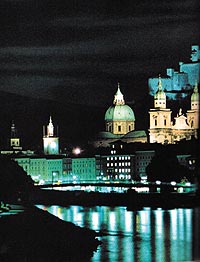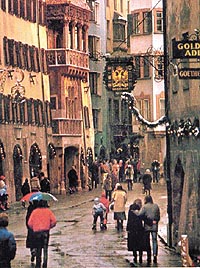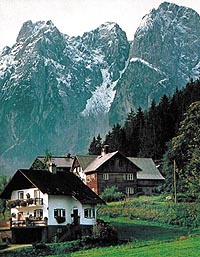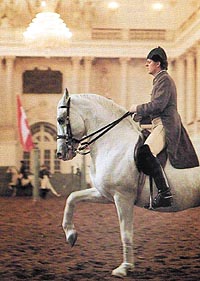by Chalerm Raksanti
A remnant kernel of the great Austro-Hungarian Empire
which collapsed in 1918, Austria emerged from the Second World War a
shattered nation, occupied by the Allied Powers. Bordered by Eastern,
Western, nonaligned and neutral nations, it secured independence and
declared neutrality in 1955.
 Salzburg,
birthplace of Mozart
Salzburg,
birthplace of Mozart
Today Austria stands as an independent Republic, and
its remarkable economic and social performance has out-distanced many of
its European neighbors. Famous for its mountain scenery, this relatively
small country is a treasure chest of intellectual culture and a living
monument to its glorious past. As to the character of the Austrian people,
a visitor quickly deduces there is no one national character, but many.
There is for instance, the Viennese character. In Vienna one finds the
backward look and the pride of their past. All of the things they have
survived through the ages produce a survival capacity, and make them feel
great. An outsider may notice they have a condescending way of speaking to
foreigners. They do not really show what they really are. Their
friendliness is a mask; deep down they are very aggressive.
 Gilded
copper tiles cap the famous balcony on the Herzog Friedrichstrasse in
Innsbruck
Gilded
copper tiles cap the famous balcony on the Herzog Friedrichstrasse in
Innsbruck
However, the mask is part of the innate character of
the Viennese. There is a penchant for negation of reality in fantasy. But
this flirtation with fantasy created the beauty of the city which is a
testimony to this point of view. The Ringstrasse, the great
boulevard encircling the central city, was created in the last half of the
19th century. The parliament is a Greek temple, the city hall, a Flemish
Gothic guildhall. The university is an Italian Renaissance palace, and the
State Opera a wedding cake on a platter. Patently absurd? Perhaps. You
could even say the famous Spanish Riding School reflects the cityís
taste for fantasy. It has a dreamlike quality.
 Traditional
houses with snow-shedding roofs below the Dachstein Mountains
Traditional
houses with snow-shedding roofs below the Dachstein Mountains
A Renaissance building in the heart of the city with
dark painted walls, the school was founded in the 16th century to provide
trained horses for the Imperial Army. After the monarchy fell, the riders
came up with the idea to make public performances to make a little money,
to buy food, uniforms and boots, because the republic tried to sell the
horses and put and end to the school. The idea prospered and now the money
the school earns gives them a good financial background.
 Castle
Durnstein, above the river Danube
Castle
Durnstein, above the river Danube
Driving west up the Danube, past castles and vineyards
and towns so pretty they seem to be fashioned on a Hollywood film set,
there is an air of repose in that lovely region of mountains. It is
covered with forests and dotted with mirror-like lakes. Rolling fields and
beckoning footpaths lead to old spa towns which wear their age and
memories like musk. On All Soulís Day people from these picturesque
towns form processions from the churches, led by village bands, to nearby
cemeteries where hundreds of residents parade along with candles
flickering, and pile heaps of flowers between the rows of silent graves.
 A
mount at the Spanish Riding School in Vienna
A
mount at the Spanish Riding School in Vienna
Salzburg has a different air from Vienna. Perhaps it is
the mountains, or the close proximity of Germany. The locals say that the
difference is in the origin. Salzburg people are more from the Bavarian
region. They feel they are nobler because of this regional similarity.
Indeed, Salzburg has much to be proud of, most of all its beauty and its
music. Aside from Vienna, the city is the spiritual and cultural heart of
Austria.
Throughout this tiny country one sees tourism driving
the economy in a favorable way. The mountain valleys are dotted with
chalets in the old Tyrolean style. The mountains fringed with dark firs
and larch seem little disturbed. Driving into the countryside one feels
plunged deeper and deeper into the past. The countryís hills are dotted
with castles, watchtowers and abbeys. Here traditions run deep.